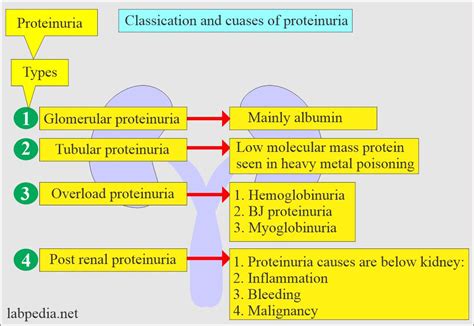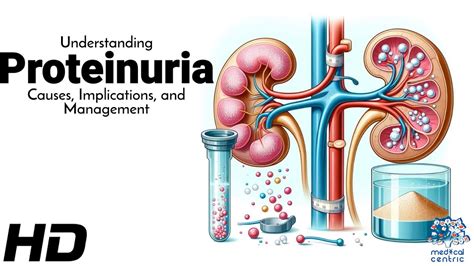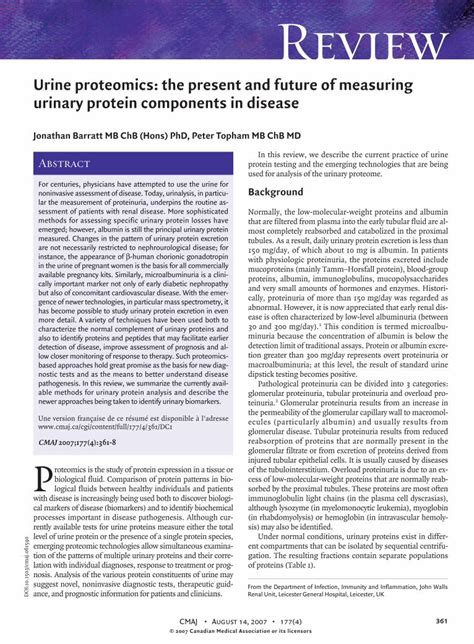Intro
Detect protein in urine with a simple test, diagnosing kidney issues. Learn about proteinuria, urine protein tests, and abnormal results, using terms like albuminuria and hematuria.
The importance of urine tests in medical diagnostics cannot be overstated, and one of the key components of these tests is the detection of protein in the urine. Proteinuria, or the presence of excess proteins in the urine, can be an indicator of various health issues, ranging from mild kidney problems to more severe conditions like kidney disease or diabetes. Understanding the role of urine tests in detecting protein and the implications of proteinuria is crucial for both healthcare professionals and individuals concerned about their health.
Proteinuria can arise from a variety of causes, including kidney damage or disease, where the kidneys' ability to filter waste and excess fluids is compromised, leading to the leakage of proteins into the urine. In many cases, the presence of protein in the urine is discovered during routine medical check-ups, emphasizing the significance of regular health screenings. Early detection of proteinuria can lead to timely interventions, potentially preventing the progression of underlying conditions and improving patient outcomes.
The process of detecting protein in the urine involves a relatively simple yet highly effective test. A urine sample is collected from the patient, and then it is analyzed for the presence of proteins. This analysis can be performed using dipstick tests, which provide immediate results, or through more detailed laboratory analyses for accurate quantification of protein levels. The choice of method depends on the clinical context and the suspected underlying cause of proteinuria. Understanding how these tests work and what their results mean is essential for making informed decisions about health care.
Introduction to Urine Protein Detection

The detection of protein in urine is a critical diagnostic tool that helps in the identification and management of various renal and non-renal disorders. Proteins are large molecules that are not typically found in urine because the kidneys filter them out. However, when the kidneys are damaged or diseased, they may fail to filter these proteins effectively, leading to their presence in the urine. The introduction of urine protein detection has revolutionized the field of nephrology, enabling early diagnosis and treatment of kidney diseases.
Types of Proteinuria
There are different types of proteinuria, including transient, orthostatic, and persistent proteinuria. Transient proteinuria is a temporary condition that can result from strenuous exercise, fever, or cold exposure. Orthostatic proteinuria occurs when protein is found in the urine when a person is in an upright position but disappears when they are recumbent. Persistent proteinuria, on the other hand, is a more serious condition that indicates ongoing kidney damage or disease.Methods of Urine Protein Detection

Several methods are available for detecting protein in urine, each with its own advantages and limitations. The most common methods include dipstick tests, sulfosalicylic acid (SSA) test, and laboratory tests such as urine protein-to-creatinine ratio (UPCR) and urine albumin-to-creatinine ratio (UACR).
Dipstick Tests
Dipstick tests are a rapid and convenient method for detecting protein in urine. These tests involve dipping a test strip into a urine sample and observing the color change, which indicates the presence and concentration of protein. While dipstick tests are easy to perform and provide quick results, they may not be as accurate as laboratory tests, especially at low levels of proteinuria.Laboratory Tests
Laboratory tests, such as UPCR and UACR, offer more accurate and quantitative measurements of proteinuria. These tests involve sending a urine sample to a laboratory for analysis, where the concentration of protein and creatinine (a waste product) is measured. The results are then used to calculate the protein-to-creatinine or albumin-to-creatinine ratio, which provides a more precise indication of kidney function and protein loss.Clinical Significance of Proteinuria

The clinical significance of proteinuria depends on the underlying cause, the quantity of protein lost, and the presence of other symptoms or laboratory abnormalities. In general, proteinuria can be an indicator of kidney damage or disease, but it can also be seen in other conditions, such as diabetes, hypertension, and certain infections.
Diabetic Nephropathy
Diabetic nephropathy is a common complication of diabetes, characterized by damage to the kidneys' filters (glomeruli) leading to proteinuria. Early detection of proteinuria in diabetic patients is crucial, as it allows for the implementation of therapeutic strategies to slow the progression of kidney disease.Hypertension
Hypertension (high blood pressure) can also cause proteinuria, either directly by damaging the kidneys or indirectly by accelerating the progression of underlying kidney disease. Managing hypertension through lifestyle modifications and antihypertensive medications is essential in reducing proteinuria and preserving kidney function.Management and Treatment of Proteinuria

The management and treatment of proteinuria depend on the underlying cause and the severity of the condition. In general, the goals of treatment are to reduce proteinuria, slow the progression of kidney disease, and manage related conditions such as hypertension and diabetes.
Lifestyle Modifications
Lifestyle modifications play a critical role in the management of proteinuria. These include dietary changes, such as reducing protein intake, limiting sodium consumption, and increasing omega-3 fatty acid intake. Regular physical activity, weight management, and smoking cessation are also important in reducing the risk of kidney disease progression.Pharmacological Interventions
Pharmacological interventions, such as angiotensin-converting enzyme inhibitors (ACE inhibitors) and angiotensin receptor blockers (ARBs), are commonly used to reduce proteinuria and slow the progression of kidney disease. These medications work by reducing blood pressure and decreasing the pressure inside the kidneys, thereby reducing protein leakage.Prevention of Proteinuria

Preventing proteinuria involves addressing the underlying risk factors for kidney disease, such as diabetes, hypertension, and obesity. Regular health check-ups, including urine tests for proteinuria, are essential for early detection and intervention.
Regular Health Check-ups
Regular health check-ups are crucial for the early detection of proteinuria and the prevention of kidney disease progression. These check-ups should include urine tests for proteinuria, blood pressure monitoring, and screening for diabetes and other related conditions.Healthy Lifestyle
Maintaining a healthy lifestyle, including a balanced diet, regular physical activity, and avoidance of smoking, can significantly reduce the risk of developing kidney disease and proteinuria. A healthy lifestyle also helps in managing related conditions, such as hypertension and diabetes, thereby reducing the risk of kidney disease progression.Future Directions in Urine Protein Detection

The future of urine protein detection holds promise, with advancements in technology and the development of more sensitive and specific tests. These advancements will enable earlier detection of kidney disease and more accurate monitoring of treatment responses, ultimately leading to better patient outcomes.
Point-of-Care Tests
Point-of-care tests are being developed to provide rapid and accurate detection of proteinuria at the patient's bedside or in outpatient settings. These tests will enable healthcare providers to make timely decisions regarding patient care and management.Biomarkers
Research into novel biomarkers for kidney disease is ongoing, with the aim of identifying more sensitive and specific markers of kidney damage and proteinuria. These biomarkers will enable earlier detection of kidney disease and more accurate monitoring of disease progression and treatment responses.What is proteinuria, and why is it important to detect it early?
+Proteinuria refers to the presence of excess proteins in the urine, which can be an indicator of kidney damage or disease. Early detection of proteinuria is crucial because it allows for timely interventions to slow the progression of kidney disease and improve patient outcomes.
How is proteinuria detected, and what are the different methods available?
+Proteinuria can be detected using dipstick tests, sulfosalicylic acid (SSA) test, and laboratory tests such as urine protein-to-creatinine ratio (UPCR) and urine albumin-to-creatinine ratio (UACR). Each method has its own advantages and limitations, and the choice of method depends on the clinical context and the suspected underlying cause of proteinuria.
What are the clinical implications of proteinuria, and how is it managed and treated?
+The clinical implications of proteinuria depend on the underlying cause and the quantity of protein lost. Management and treatment of proteinuria involve lifestyle modifications, pharmacological interventions, and addressing the underlying cause of proteinuria. The goals of treatment are to reduce proteinuria, slow the progression of kidney disease, and manage related conditions such as hypertension and diabetes.
In conclusion, the detection of protein in urine is a vital diagnostic tool that plays a critical role in the identification and management of kidney disease and related conditions. Understanding the importance of proteinuria, the methods of detection, and the clinical implications is essential for healthcare providers and individuals concerned about their health. By addressing the underlying causes of proteinuria and implementing timely interventions, it is possible to slow the progression of kidney disease and improve patient outcomes. We invite readers to share their thoughts and experiences with proteinuria and urine protein detection, and we encourage healthcare providers to stay updated on the latest advancements in this field to provide the best possible care for their patients.
